Jewel of the Silk Road
Buddist art from Dunhuang
At Cà Foscari until April 8th 2018
Dorsoduro 3246 – open 10am>6pm daily but Tuesdays
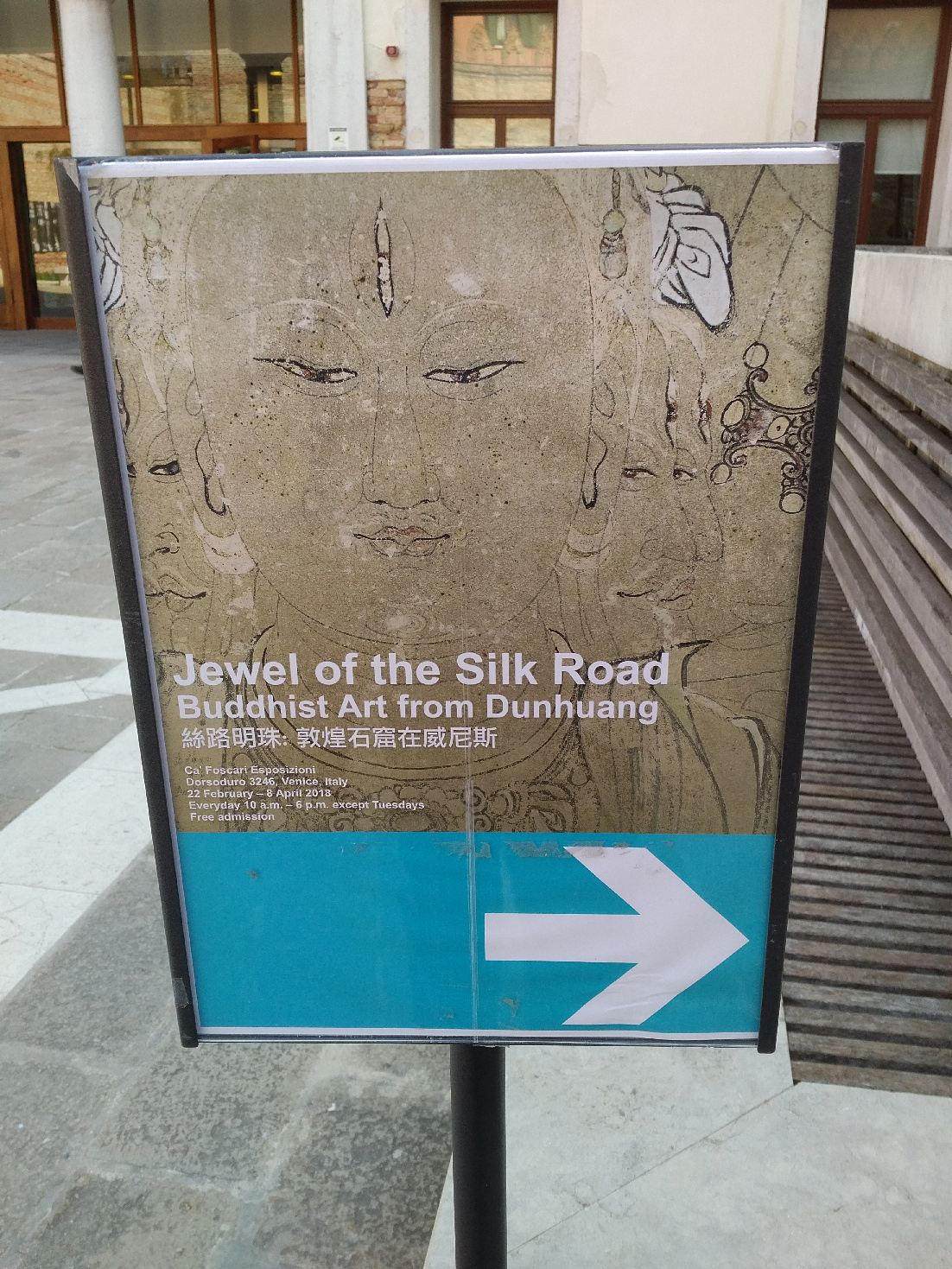 Dunhuang is an oasis city in the Gobi desert in northwestern China and one of the most important hubs along the ancient Silk Road. For millenia it facilitated exchanges between ancient China and the outlying lands. In keeping with the inclusive essence of Chinese civilization, Dunhuang witnessed the flow and assimilation of diverse cultures and trade.
Dunhuang is an oasis city in the Gobi desert in northwestern China and one of the most important hubs along the ancient Silk Road. For millenia it facilitated exchanges between ancient China and the outlying lands. In keeping with the inclusive essence of Chinese civilization, Dunhuang witnessed the flow and assimilation of diverse cultures and trade.
As a treasure trove of Buddhist art, the Dunhuang caves have recorded all aspects of social life on the eastern end of the ancient Silk Road absorbing multicultural elements and turning them into gems of human civilisations through the construction of rock-cut caves spanning a millennium from the 4th to the 14th century. During the past centuries the caves and their art decoration were buried under the sand to be fortuitously rediscovered at the beginning of the 20th century. Their insulated location preserved the caves from looting. The site contains a total of 753 caves, over 484000 sq feet of murals and 2415 statues spanning over then Chinese dynasties and regimes. Marco Polo, the 13th century Venetian merchant and traveler also mentioned his experience in Dunhuang then known as Shazhou.
In 1987 the caves of Dunhuang have been included in the Unesco World Heritage List.
Marino Marini – Visual Passion
until May 1st 2018
at the Guggenheim Collection – open 10am>6pm daily but Tuesday
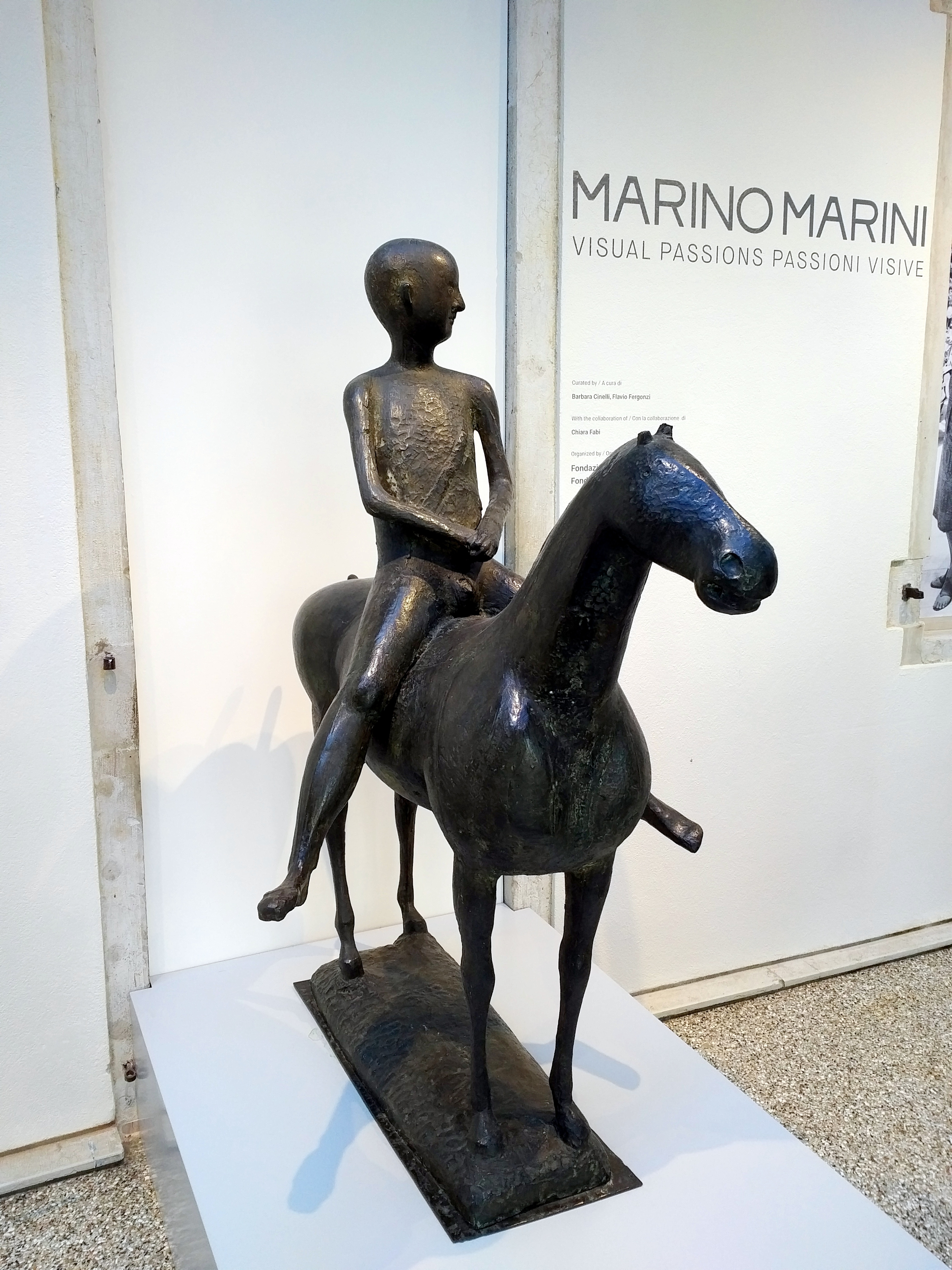 This exhibition presents major sculptures by Marino Marini (1901–80) and selected works by artists such as Giacomo Manzù, Henry Moore, Pablo Picasso, and Auguste Rodin, as well as Etruscan objects and Italian sculptures from the 15th century. Visual Passions contextualizes Marini’s oeuvre in a broader art historical framework and establishes a focused and innovative dialogue between his production and the sculptural traditions he referenced.
This exhibition presents major sculptures by Marino Marini (1901–80) and selected works by artists such as Giacomo Manzù, Henry Moore, Pablo Picasso, and Auguste Rodin, as well as Etruscan objects and Italian sculptures from the 15th century. Visual Passions contextualizes Marini’s oeuvre in a broader art historical framework and establishes a focused and innovative dialogue between his production and the sculptural traditions he referenced.
Marino Marini is the best known Italian sculpture artist of the 20th century and the most famous as well: many exhibits have been organized in his name worldwide. This exhibition aims to offer a historically researched reflection on the ties that linked Marini’s work from the 20’s to the 60’s and the history of 20th century modernism,
His works will be first shown overseas in 1944 at the time of the exhibit ‘20th century Italian art’ at the MOMA in New York. He’ll be later acclaimed in 1950 when the art gallerist Curt Valentin organized in New York his true first personal exhibit in the USA. Marini’s success was immediate and his debut on 57th Street brought him international acclaim. What distinguished Marini in the eyes of the American public was his calibrate balance between tradition and modernity
His fame then overcome art confines when his works were shown in major American movies like ‘Sabrina’ (1954) by B. Wilder, ‘Guess who’s coming to dinner (1967) by S. Kramer and ‘Play it again Sam’ (1971) by H. Ross. Preeminent figures like Nelson Rockefeller and Igor Stravinskij ask Marino to be portrayed by him while the magazines Life and Newsweek further diffused his fame in their articles.
During the 50’s Marini’s works were exhibited in London, Hannover, Hamburg, Munich. In 1952 he won the first prize for sculpture at the Venice Biennale. In 1959 the statue called ‘Horse and Rider’ was unveiled in the city of The Hague in Holland.
In the 30’s and 40’s Marino focused on the formulation of a ‘pure form’ recovering and re-elaborating with a modern eye the Etruscan and medieval tradition. The present Guggenheim exhibit dedicates the first rooms to that first approach of Marini to art work.
Marini from now on will dedicate his attention mostly on the subject of the man riding on horse. In his words ‘’All of humanity and nature reside in the figures of the horse and the rider of every age. This is my way to tell about History. At first there is harmony between them but later on, above all after IIWW, the world of machines brakes in violently fracturing this symbiosis in a most dramatic way although not less alive and vitalizing.’’
Stating from ’43 we see a change in the plastic rendering of the subject, the relationship between horse and rider becomes dramatic and conflictual. In the post-war years Marino stresses the dramatic tension of his works deforming them into a rough and bare-born surface.
The Sonnabend Collection in Venice
until September 2nd 2018
at the Ca Pesaro Museum of Modern Art – open from 10am>6pm daily but Monday
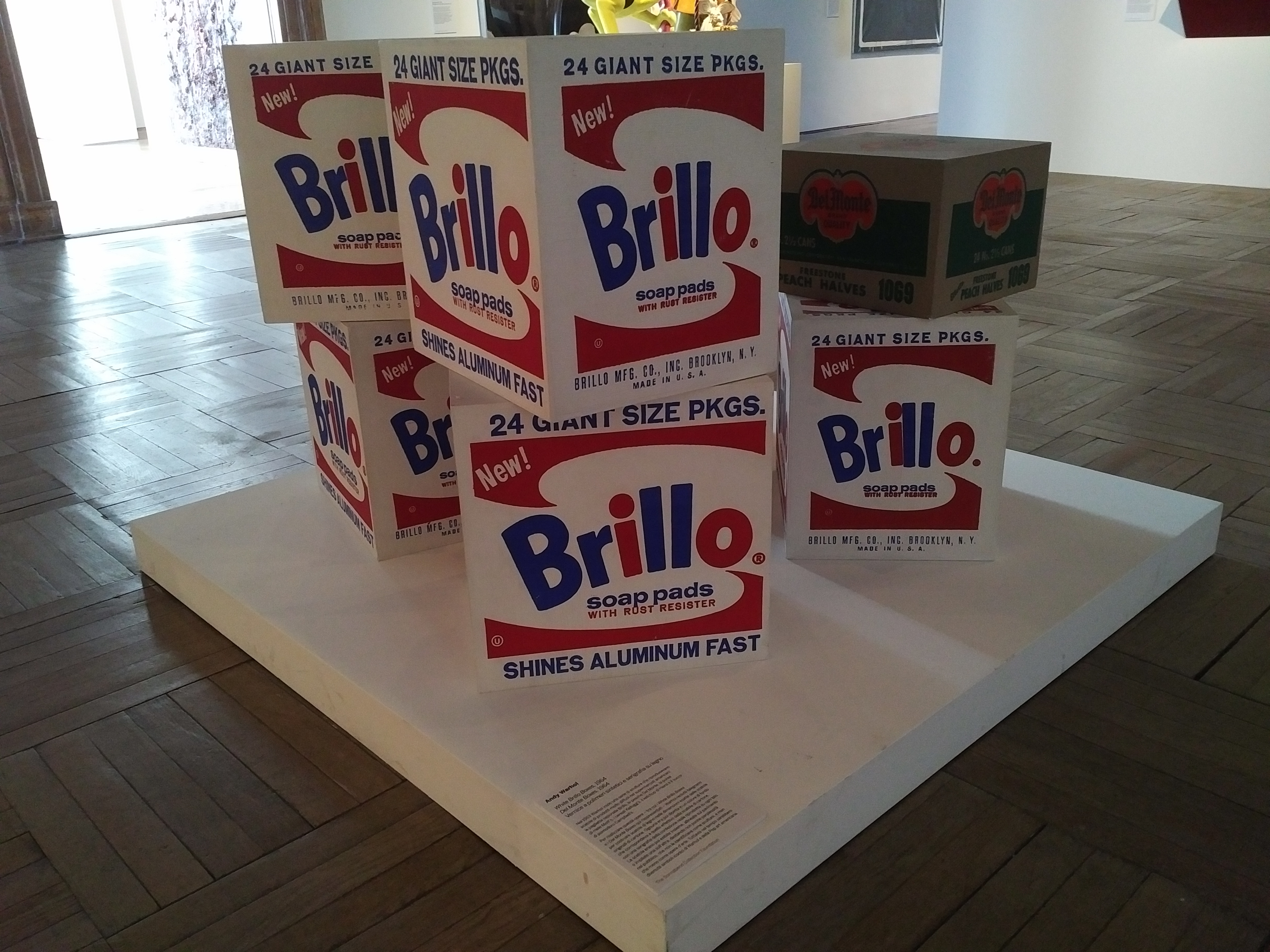 Due to a long term loan to the Venice City Museums Foundation granted in 2013, the Sonnabend Collection is back in town at the Ca Pesaro Museum of Modern Art until Sept. 2 2018.
Due to a long term loan to the Venice City Museums Foundation granted in 2013, the Sonnabend Collection is back in town at the Ca Pesaro Museum of Modern Art until Sept. 2 2018.
Ileana Sonnabend (1914-2007) nèe Shapira was a gallerist, patron, and art collector.
She first opened a gallery in Paris in 1962 and became the driving force in the diffusion and sponsorship of 1960’s and 70’s American art in Europe. She launched Andy Wharol in the Old Continent in an exhibition called Pop Art Américaine at her Paris gallery in January 1964. In 1968 she and her husband Michael Sonnabend, moved to New York where in September 1971 she opened a new gallery in SoHo in an old paper factory. Within a couple of years and largely thanks to the Sonnabend Gallery SoHo became the center of Manhattan’s expanding art scene. Although Ileana didn’t rest in his quest and enthusiasm for the next big thing after Pop Art, she was then among the earliest gallerists to search and promote new movements like Process Art, Neo-Conceptualism and Neo-Geo.
In 2000 Ileana closed her other galleries and moved to the what is now the present Sonnabend gallery in Chelsea. She died in 2007 at age 97 in New York.
Venice Architectural Biennale 2018
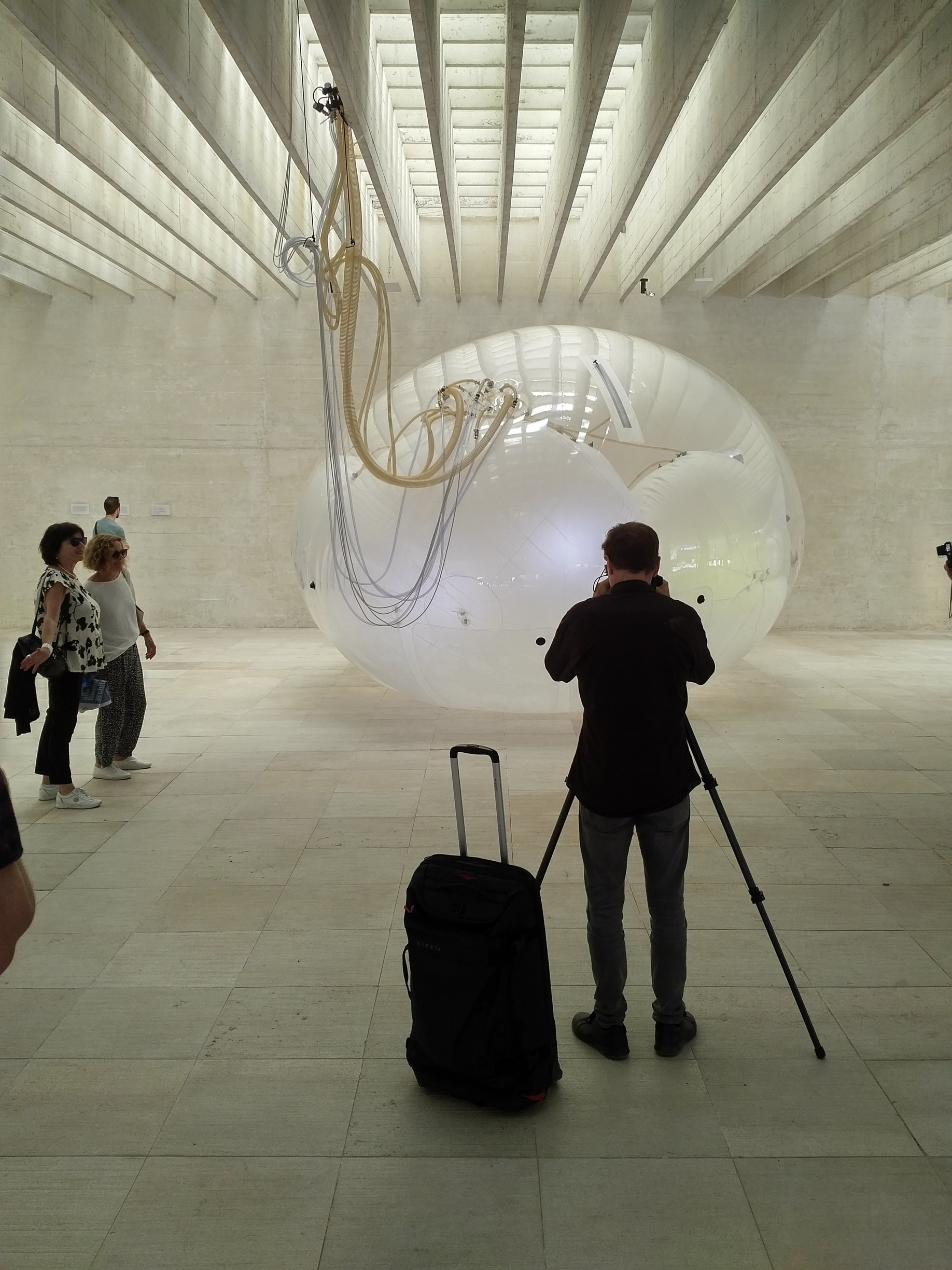
Lundén Architecture Company – Scandinavian pavillion
FREESPACE
from May 26th to November
Giardini, Arsenale and venues throughout Venice.
Curators
Yvonne Farrell and Shelley McNamara
Yvonne Farrell and Shelley McNamara live and work in Dublin, where they graduated from the School of Architecture of University College and co-founded the firm Grafton Architects in 1977.
In 2008 they won the World Building of the Year Award for the design of the new building at the Università Bocconi in Milan and were finalists of the Sterling Prize for the University of Limerick Medical School and Student Accommodation. They received the Jane Drew Award in 2015. In 2016, their project UTEC University in Lima, Peru won the inaugural RIBA International Award.
Their title for the 2018 Architecture Biennale is Freespace.
Architecture with a sense of humanity at its core. Architecture which challenges ways of thinking, new ways of seeing the world, of inventing solutions. Architecture which provides for the well-being and dignity of each citizen on this fragile planet. Architecture as a way of engaging with people over time, the architect’s intended and unintended legacies.
Grafton Architects were represented at the Biennale Architettura 2002. In 2012, David Chipperfield curated his Common Ground Architecture Biennale: “to encourage my colleagues to react against the prevalent professional and cultural tendencies of our time that place such emphasis on individual and isolated actions. I encouraged them instead to demonstrate the importance of influence and of the continuity of cultural endeavour, to illustrate common and shared ideas that form the basis of an architectural culture.” Farrell & McNamara were awarded the Silver Lion in 2012.
The 2016 Biennale: REPORTING FROM THE FRONT, curated by Alejandro ARAVENA looked at architecture as a means of stimulating social dialogue, to facilitate and improve the life of the marginalised and dispossessed. Freespace is a continuation of this ongoing Biennale debate amongst architects + the public, a forum over many years in which both Grafton architects have been regular and active participants.
Farrell & McNamara presented their Project for the UTEC University campus in Lima, Peru, at the Biennale Architettura 2016”.
They began teaching at the University College Dublin in 1976, and are currently full Professors of architecture at the Accademia di Mendrisio and Adjunct Professors in UCD. They held the Kenzo Tange Chair at GSD Harvard in 2010 and the Louis Kahn Chair at Yale in 2011. They have taught and lectured widely throughout Europe and in the United States.
The architects have been Jury members for architectural awards such as the RIBA Stirling Prize in 2008, the Mies Van Der Rohe Prize in 2011 and the RIBA Award in 2012.
website
The Pinault Foundation –
Palazzo Grassi & Punta della Dogana:
Palazzo Grassi presents Albert Oehlen.
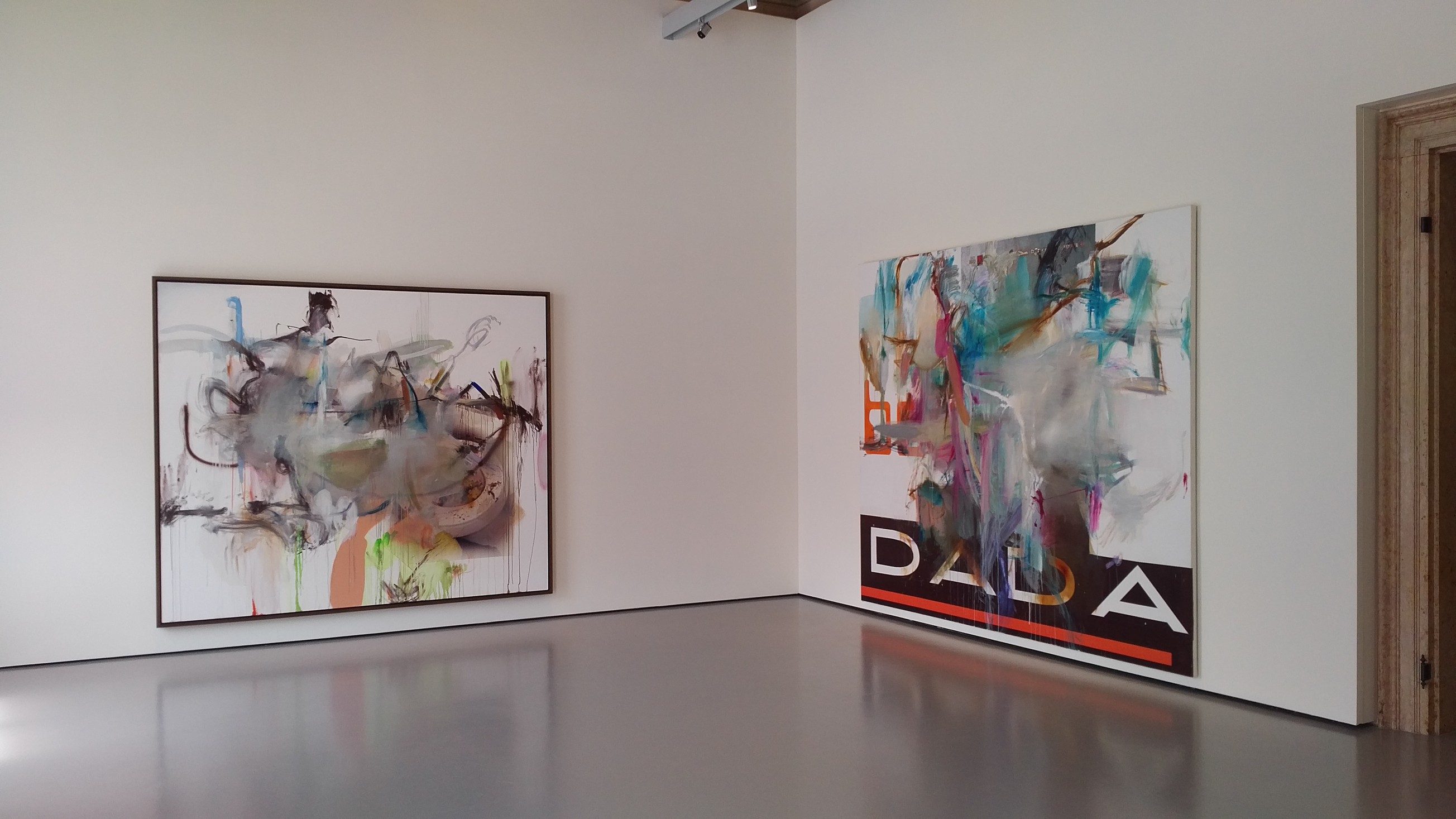
Albert Ohelen, Palazzo Grassi, 2018
The exhibition is part of a cycle of solo shows dedicated to contemporary artists – inaugurated in 2012 by Urs Fischer and followed by Rudolf Stingel, Irving Penn, Martial Raysse and Sigmar Polke – which are contemporaneous with exhibitions from the permanent Pinault Collection at the Punta della Dogana.
Caroline Bourgeois curates a selection of 85 works including some lesser-known ones from the 1980s to the present.
Albert Oehlen (born 1954, Krefeld, Germany) is from the generation which followed Gerhard Richter, Joseph Beuys, Sigmar Polke and Anselm Keifer. The influence of Polke, his one-time tutor, is evident in the iconoclastic experimentation and mix of high & low culture as is the free and fluid painting style of Georg Baselitz.
Oehlen began working in the 1970s, a time of social and political tumult and cultural flowering in West Germany. In cinema Herzog, Wenders, Fassbinder, Volker Schlöndorff and Margarethe von Trotta were attracting international acclaim as was Pina Bausch in dance. This to the backdrop of radical student politics and the kidnapping and murders of the Baader Meinhof/ RAF.
Oehlen studied alongside Martin Kippenberger in Hamburg. They were long-time friends, sharing many artistic traits. Oehlen’s art shows influences of Dadaist techniques such as ‘chance’. He combines the abstract and the figurative. His practice sees brush and spray used with collage. He projects images onto canvas, using commercial billboard printing technology and experiments with CAD design.
Oehlen started a record label in the 1990s: Leiterwagen – for experimental electronica. The constant references and influence of music throughout his work shape the non- chronological structure of this exhibition which follows a beat to span his different genres and periods. Music is a metaphor for his method and rhythm, improvisation and repetition, density and harmony, of sound as pictorial gesture.
His most recent exhibitions were the Museo Nacional de Bellas Artes in Havana (2017), Cleveland Museum of Art (2016), New Museum in New York (2015), and a major retrospective from the 1980s to the present at MUMOK, Vienna (2013). Venice will be his largest solo exhibition to date with works from the Pinault Collection, private collections and museums.
Punta della Dogana presents ‘Dancing with Myself’
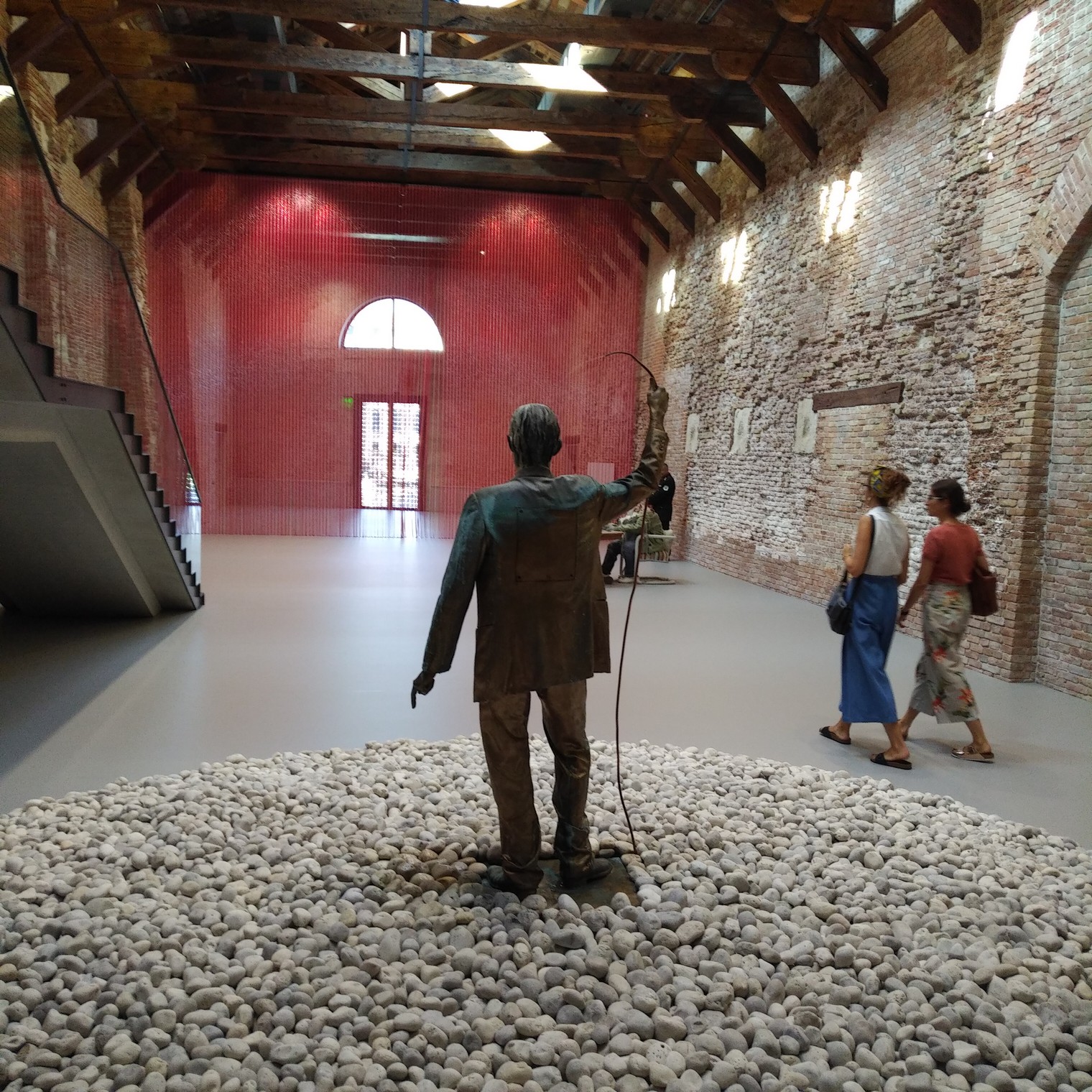
Alighiero&Boetti – sel-portrait
a collective show of works from the Pinault Collection in collaboration with the Folkwang Museum in Essen, Germany, where it was presented in 2016.
Curators: Martin Bethenod, Florian Ebner, Anna Fricke
The Essen exhibition: Selbstporträt und Selbsterfindung (Self-portrait and Self-invention) is a title which invites the public to see the artist reflect on his/ her own body, to reinvent his/ her identity.
The Venice exhibition includes work from the 1970s to the Present with artists from different generations and countries using the most diverse media but whose common point is the Self and projection or reinvention of the Ego. The protagonist is the artist, thematising the means by which they express themselves through the body, biography, social/ sexual identity.
100 works have been selected from the Pinault Collection including Gilbert & George, Cindy Sherman and Maurizio Cattelan – with other works on loan from the Folkwang Museum. The show includes 45 works not presented in Essen.
website
Tintoretto: The Artist of Venice at 500
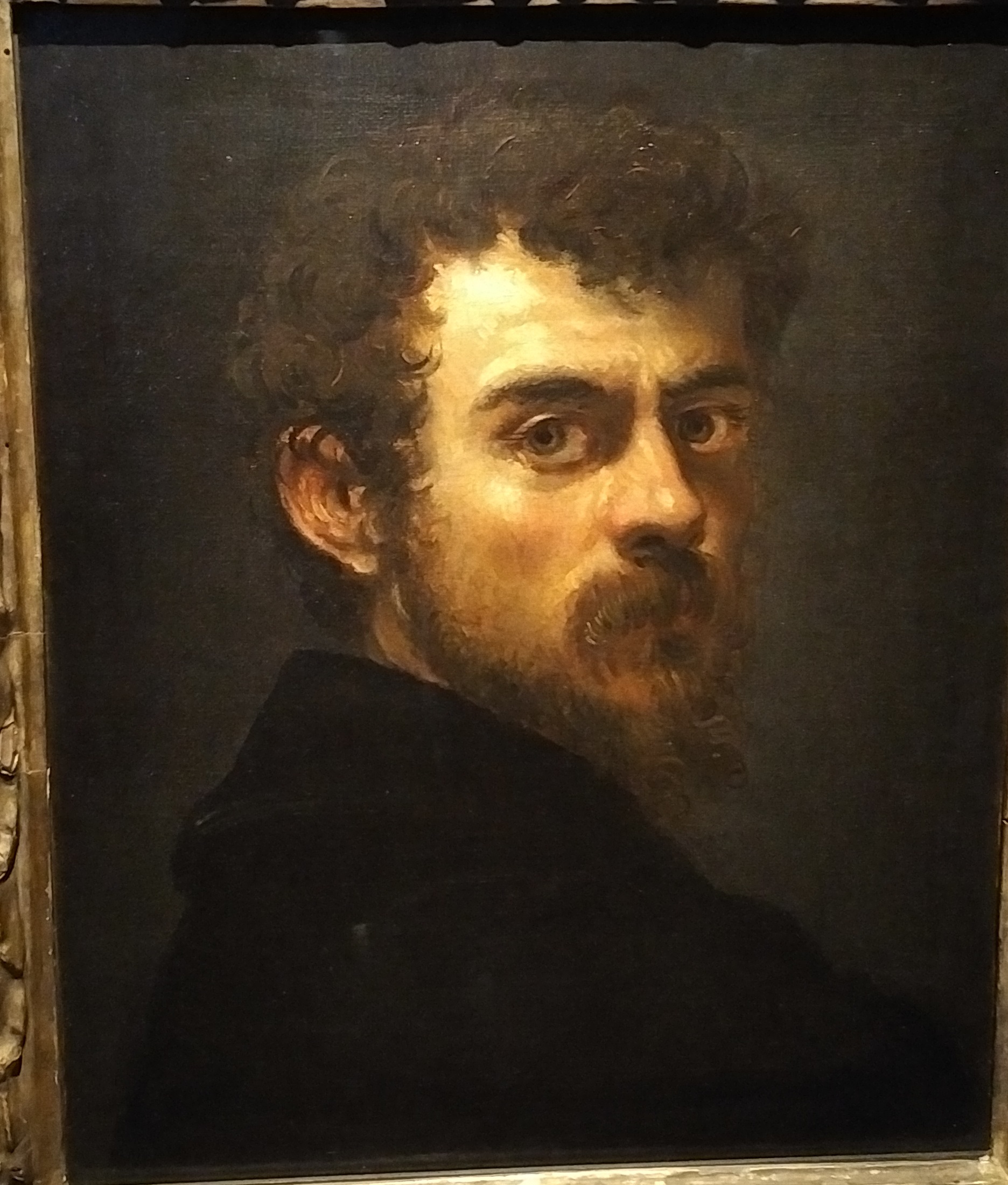
Tintoretto, self-portrait
Venice – from Sept. 7, 2018 > Jan. 6, 2019
Palazzo Ducale – A retrospective, major paintings from Venice and int.l loans
Accademia Galleries – Youth and early career, paintings, drawing and prints
New York – from Oct. 12, 2018 > Jan. 6, 2019
Morgan library & museum – Drawing in Tintoretto’s Venice
Washington – from March 3, 2019 > May 26, 2019
National Gallery – Drawing in Tintoretto’s Venice / Venetian Prints in the time of Tintoretto
Washington – from March 3, 2019 > June 30, 2019
National Gallery – A retrospective, major paintings from Venice and int.l loans.
It will be Venice, bithplace of Jacopo Robusti better known as Tintoretto to host the first part of a large exhibit dedicated to him to celebrate the quintecennial of his birth to start on Sept. 8th at the Ducal Palace and to continue in Washington and New York through 2019.
The last great exhibit on Tintoretto in Venice took place in 1937 so after so many years the next one coming is truly the greatest art event in Venice in decades.
The exhibition will have two venues in Venice. In the Ducal Palace we’ll see a retrospective of his greatest works during his maturity and final years including masterpieces hosted in Venice but coming also from the National Gallery in London, the Prado Museum in Madrid and the Kunsthistorisches Museum in Vienna. The second venue in the Accedemia Galleries visitors will see a selection of his early works and juvenile essays like prints and drawings. The goal of this two sided art event is to provide a complete overview on Tintoretto’s career from the difficult years of his beginning to the acclamation of his position as the greatest Venetian painter by the end of the 16th century.
After its closure in Venice the exhibiton will continue in the USA at the National Gallery in Washington, read more here https://www.nga.gov/press/2017/tintoretto500.html
John Ruskin, The Stones of Venice
Venice – from March 10 > June. 10 2018
Palazzo Ducale open daily 10am>6pm
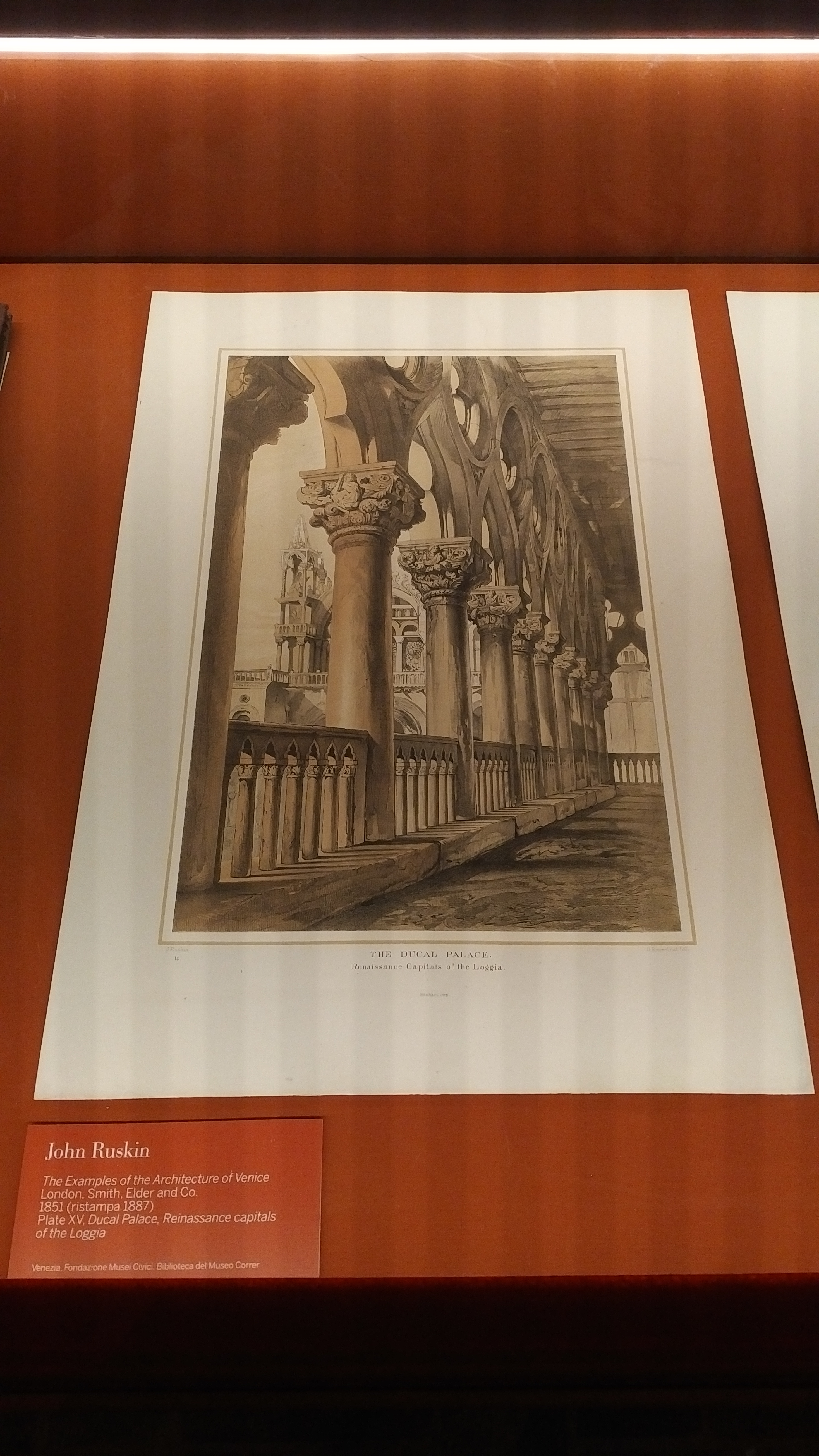 John Ruskin (1819 – 1900) was one of the most important art critics and British scholars of the 19th century with a vast scope of interests including geology, architecture, myth, ornithology, literature, education, botany and political economy.
John Ruskin (1819 – 1900) was one of the most important art critics and British scholars of the 19th century with a vast scope of interests including geology, architecture, myth, ornithology, literature, education, botany and political economy.
His name will be always intertwined with Venice. He visited the city 11 times, the first one in 1837 with his parents the last one in 1888 when he was 67. Although the most important sojourn for its future relations with Venice took place in the years 1849/1851 writing, painting and taking pictures. The final result was his classic ‘The Stones of Venice’ the first modern scholarly review on the city architectural styles where he discusses Venice’s Byzantine, Gothic (his favorite) and Renaissance periods providing also a general history of the city.
Another seminal moment in the relationship between Ruskin and Venice was in the 1870’s whn he loudly spoke against the disrupting restauration of St. Mark’s church which led to the substitution and re-creation of parts of the original wall mosaics and marble floor. The theories of John Ruskin recognised in the materiality of monuments the signs of the passion and technical skills of the builders of the past suggesting therefore the preservation of all the original elements of an ancient building.
The items exhibited at the Ducal Palace come from several great world museums including a selection of the original Ruskin’s ‘Venetian Notebooks’ ( a notebook with drawings, sketches and notes) that he used to write the ‘Stones’, some first editions of that book, daguerreotypes and pictures.

